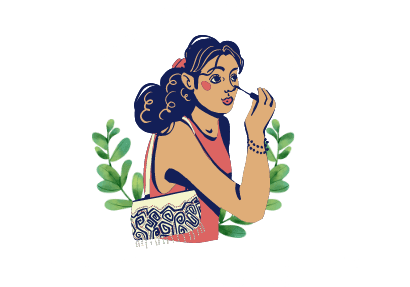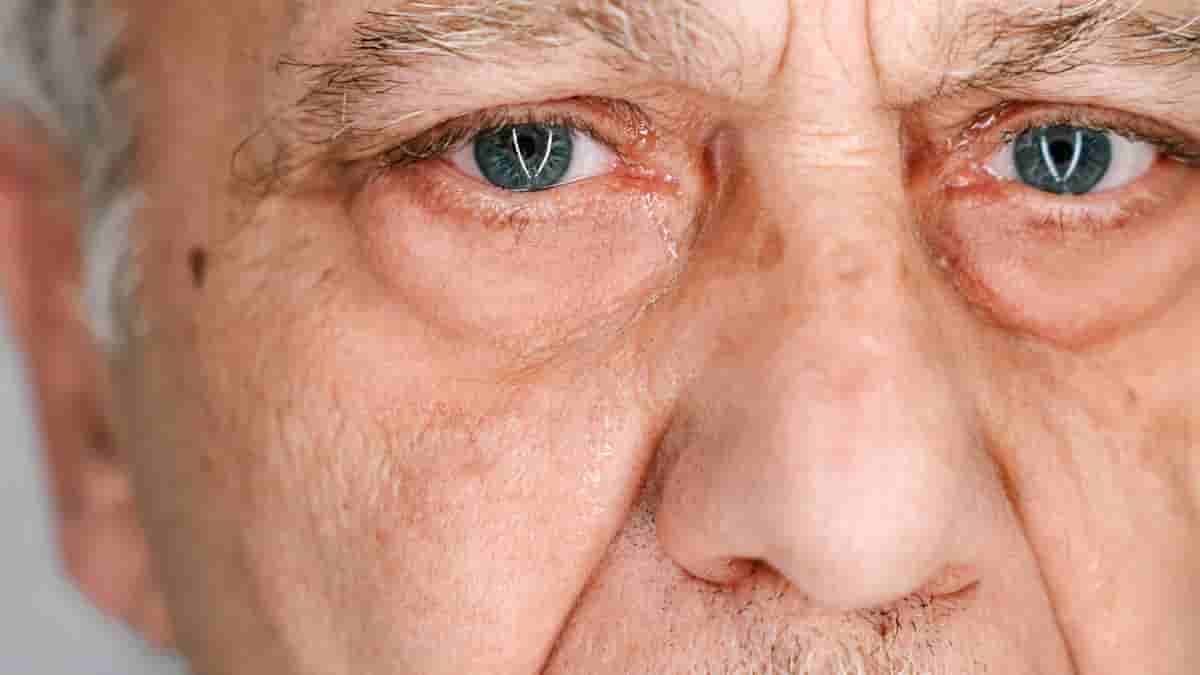Here is your complete guide to botox or fillers for under eye wrinkles.
Introduction to Botox or Fillers for Under Eye Wrinkles
Under-eye wrinkles are a common concern for many individuals seeking to maintain a youthful appearance. As we age, our skin undergoes various changes, leading to the formation of fine lines and wrinkles, particularly in the delicate under-eye area. These wrinkles can significantly impact one’s self-esteem and overall confidence. In this article, we will explore the options available for addressing these concerns, specifically focusing on botox or fillers for under eye wrinkles.
With the growing popularity of cosmetic treatments, understanding the differences between Botox and fillers is crucial for making an informed decision. Both treatments offer unique benefits and cater to different types of under-eye wrinkles. This comprehensive guide will delve into the specifics of each treatment option, helping you determine which one may be best suited for your needs.
Understanding Under Eye Wrinkles
Under-eye wrinkles can be categorized into two main types:
- Dynamic Wrinkles: These are caused by muscle movement and are often referred to as expression lines. They appear when you smile, frown, or squint.
- Static Wrinkles: These result from volume loss and skin elasticity deterioration over time. They are visible even when your face is at rest.
Causes of Under Eye Wrinkles: Botox or Fillers for Under Eye Wrinkles
Several factors contribute to the formation of under-eye wrinkles:
- Aging Process: As we age, collagen production decreases, leading to thinner skin and loss of elasticity.
- Sun Exposure: UV rays can damage collagen and elastin fibers in the skin, accelerating the aging process.
- Lifestyle Factors: Habits such as smoking, poor diet, and dehydration can exacerbate the appearance of wrinkles.
What is Botox?
Botox, or botulinum toxin type A, is a neurotoxic protein that temporarily paralyzes muscles to reduce the appearance of wrinkles. It has been widely used in cosmetic procedures since its FDA approval in 2002.
- Mechanism of Action: Botox works by blocking nerve signals to specific muscles, preventing them from contracting. This results in a smoother appearance on the skin’s surface.
How Botox Works for Under Eye Wrinkles
When applied to dynamic wrinkles around the eyes (often referred to as crow’s feet), Botox effectively relaxes the muscles responsible for these expressions.
- Target Areas:
- Crow’s feet (wrinkles at the outer corners of the eyes)
- Frown lines between the eyebrows
Pros and Cons of Botox for Under Eye Wrinkles
| Pros | Cons |
|---|---|
| Non-invasive procedure | Temporary results (3-6 months) |
| Quick treatment (15 minutes) | Potential side effects (bruising, headaches) |
| Minimal downtime | Not suitable for static wrinkles |
What are Dermal Fillers?
Dermal fillers are injectable substances used to restore volume and fullness to areas of the face. The most common type used for under-eye treatment is hyaluronic acid fillers.
- Types of Fillers:
- Hyaluronic acid (e.g., Juvederm, Restylane)
- Calcium hydroxylapatite
- Poly-L-lactic acid
How Fillers Work for Under Eye Wrinkles
Fillers work by adding volume beneath the skin’s surface, effectively reducing the appearance of static wrinkles and hollows under the eyes.
- Target Areas:
- Tear troughs (the area between the lower eyelid and cheek)
- Hollow areas that contribute to dark circles
Comparing Botox and Fillers: Botox or Fillers for Under Eye Wrinkles
Effectiveness for Different Types of Wrinkles
When considering botox or fillers for under eye wrinkles, it’s essential to understand their effectiveness based on wrinkle type:
- Botox: Best suited for dynamic wrinkles caused by muscle movement.
- Fillers: More effective for static wrinkles resulting from volume loss.
Longevity of Results of Botox or Fillers for Under Eye Wrinkles
The duration of results varies significantly between Botox and fillers:
| Treatment | Duration |
|---|---|
| Botox | 3-6 months |
| Fillers | 6 months to 2 years |
Cost Considerations of Botox or Fillers for Under Eye Wrinkles
Cost can also be a deciding factor when choosing between treatments:
| Treatment | Average Cost per Session |
|---|---|
| Botox | $300-$700 |
| Fillers | $650-$1,200 per syringe |
Pros and Cons of Botox or Fillers for Under Eye Wrinkles
| Treatment | Pros | Cons |
|---|---|---|
| Botox | – Non-invasive procedure – Quick treatment (15 minutes) – Reduces dynamic wrinkles effectively – Minimal downtime | – Temporary results (3-6 months) – Potential side effects (bruising, headaches) – Not effective for static wrinkles |
| Fillers | – Immediate volume restoration – Long-lasting effects (6 months to 2 years) – Can stimulate collagen production – Effective for static wrinkles | – Risk of lumps or uneven appearance – Requires skilled injector for best results – Possible swelling or bruising post-treatment |
Common Mistakes to Avoid When Considering Botox or Fillers for Under Eye Wrinkles
1. Choosing an Unqualified Practitioner
Opting for inexperienced injectors can lead to undesirable results, such as asymmetry or an unnatural appearance. Always seek licensed professionals with experience in facial aesthetics.
2. Over-Injection
Applying too much product can result in a “frozen” look with limited facial expressions. It’s often better to start with less and gradually adjust as needed.
3. Incorrect Injection Depth
Injecting too deeply or superficially can lead to complications such as bruising or uneven results. Understanding facial anatomy is crucial for successful outcomes.
4. Ignoring Pre-Treatment Guidelines
Failing to follow pre-treatment advice, such as avoiding blood thinners and alcohol, can increase the risk of bruising and swelling.
5. Neglecting Aftercare Instructions
Not adhering to post-treatment care can affect the longevity and effectiveness of the results. For instance, avoiding pressure on the treated area is essential immediately after the procedure.
6. Self-Injecting
Attempting to inject fillers or Botox at home can lead to severe complications, including infections, uneven results, or even permanent damage.
By being aware of these common mistakes and taking the necessary precautions, you can enhance your chances of achieving optimal results when opting for botox or fillers for under eye wrinkles.
What are the Best Alternatives to Botox or Fillers for Under Eye Wrinkles
When considering treatments for under-eye wrinkles, there are several effective alternatives to Botox and fillers. These options can provide similar benefits without the need for injections or may target different aspects of skin aging. Below are some of the best alternatives:
1. Neurotoxin Injectables
Neurotoxin injectables are a category of treatments that include various brands of botulinum toxin. Alternatives to Botox include:
- Dysport: This neurotoxin tends to diffuse more widely than Botox, making it suitable for larger treatment areas.
- Xeomin: Known as the “naked” botulinum toxin, Xeomin contains only the active ingredient without any additives, which may reduce the risk of developing antibodies.
- Jeuveau: A newer injectable that works similarly to Botox and is specifically designed for aesthetic purposes.
These alternatives can effectively reduce dynamic wrinkles around the eyes, similar to Botox.
2. Dermal Fillers
While dermal fillers are commonly used alongside Botox, they can also serve as standalone treatments. Hyaluronic acid-based fillers like Restylane and Juvéderm can:
- Plump under-eye hollows (tear troughs)
- Smooth fine lines and wrinkles
- Stimulate collagen production
Fillers can provide immediate volume restoration and a more youthful appearance.
3. Microneedling with Radiofrequency (Vivace)
Vivace combines microneedling with radiofrequency energy to:
- Tighten skin
- Reduce fine lines
- Stimulate collagen and elastin production
This treatment is effective for improving skin texture and firmness, making it a great alternative for under-eye wrinkles.
4. Microcurrent Therapy
Microcurrent therapy uses low-grade electrical currents to:
- Stimulate facial muscles
- Improve circulation
- Enhance skin elasticity
This non-invasive treatment acts like a workout for your facial muscles, helping to reduce signs of aging.
5. Acupuncture
Acupuncture has been recognized not only for pain relief but also as an effective anti-aging treatment. It helps by:
- Improving blood circulation
- Enhancing skin elasticity
- Promoting hydration
This holistic approach can lead to tighter and plumper skin with reduced wrinkles.
6. Face Patches
Face patches, such as Frownies, are adhesive patches that temporarily smooth out wrinkles by restricting muscle movement. They are:
- Non-invasive
- Affordable
- Easy to use
Using these patches regularly can help diminish fine lines over time.
7. Chemical Peels
Chemical peels involve applying a solution to remove the outer layer of skin, which helps in:
- Reducing fine lines
- Improving skin texture
- Promoting new skin growth
While they require some recovery time, chemical peels can yield significant improvements in skin appearance.
8. Topical Treatments
Various topical treatments can also serve as alternatives or complements to injectables:
- Retinol: A vitamin A derivative that promotes cell turnover and collagen production.
- Vitamin C Serums: Antioxidants that help brighten the skin and improve texture.
- Hyaluronic Acid Creams: Hydrate and plump the skin, reducing the appearance of wrinkles.
These products can be effective in maintaining youthful skin when used consistently.
Combination Treatments of Botox or Fillers for Under Eye Wrinkles
Why Combine Botox and Fillers?
Combining both treatments can provide a more comprehensive approach to facial rejuvenation. By addressing both dynamic and static wrinkles simultaneously, patients can achieve a more balanced and natural look.
Case Studies/Examples
- A patient with pronounced crow’s feet may benefit from Botox injections while using fillers to restore volume in tear troughs.
Preparing for Treatment
Consultation Process
Before undergoing any treatment, it’s crucial to have a thorough consultation with a qualified provider. During this process:
- Discuss your goals and concerns
- Review your medical history
- Ask about potential risks and side effects
- Understand what to expect during and after treatment
Pre-Treatment Guidelines
To ensure optimal results:
- Avoid blood thinners (e.g., aspirin) a week prior
- Stay hydrated
- Avoid alcohol consumption before treatment
Aftercare and Recovery of Botox or Fillers for Under Eye Wrinkles
Post-Treatment Instructions for Botox
After receiving Botox injections:
- Avoid rubbing or massaging the treated area
- Stay upright for at least four hours
- Refrain from strenuous exercise for 24 hours
Post-Treatment Instructions for Fillers
For filler treatments:
- Apply ice packs to reduce swelling
- Avoid excessive sun exposure
- Do not lie down for at least six hours post-treatment
Read Also: Castor Oil vs Black Castor Oil.
FAQs about Botox or Fillers for Under Eye Wrinkles
What is the difference between Botox and fillers?
Botox is primarily used for dynamic wrinkles caused by muscle movement, while fillers add volume to areas affected by static wrinkles due to loss of fat or elasticity.
Read Also: Hair Flat Iron Ceramic vs Titanium.
How long do results last?
Results from Botox typically last 3-6 months, whereas fillers can last anywhere from 6 months to 2 years depending on the type used.
Read Also: Booty Firming Cream.
Are there any side effects?
Common side effects include bruising, swelling, or redness at injection sites. Serious side effects are rare but possible.
Read Also: Cica Cream Korea.
Can I combine both treatments?
Yes! Combining botox or fillers for under eye wrinkles can provide a more comprehensive solution.
Read Also: Keratin Cream Treatment.
How do I choose between Botox or fillers?
Consult with a qualified practitioner who can assess your specific needs and recommend an appropriate treatment plan based on your wrinkle type.
Read Also: Supplements for Booty Growth.
Conclusion
In conclusion, both botox and fillers offer effective solutions for addressing under-eye wrinkles but cater to different needs based on wrinkle type. Understanding their unique benefits allows individuals to make informed choices tailored to their aesthetic goals. Whether you opt for one treatment or consider combining both options, consulting with a certified professional will ensure that you achieve optimal results in your journey toward youthful-looking skin.
Read Also: Collagen and Retinol Cream.

